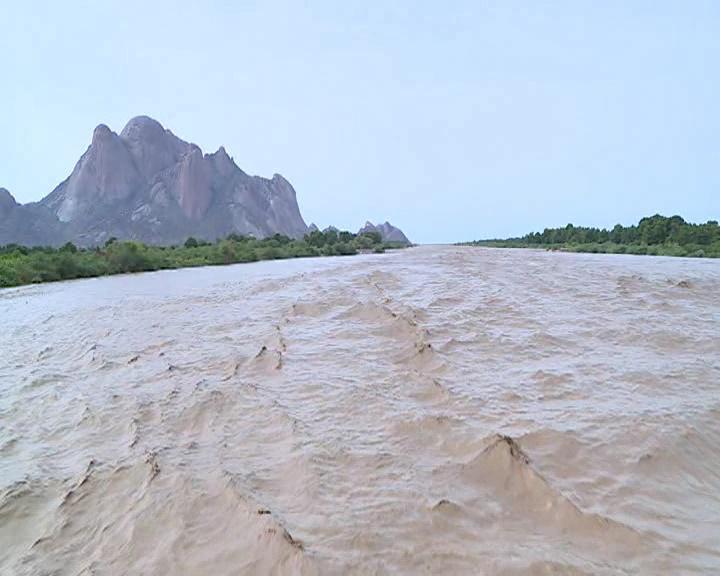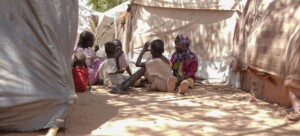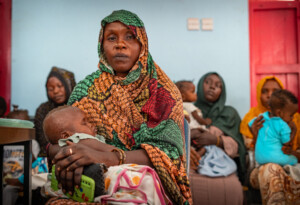Eastern Sudan: Two drown in Gash River floods, cholera reported

The El Gash River in Kassala in the raining season (File photo: Sudan News Agency)
The El Gash River swept through Aroma in eastern Sudan’s Kassala on Friday, for the second time since the beginning of the rainy season in June. Cholera is spreading in the town. Two people drowned in the river in Kassala city.
Witnesses told Radio Dabanga from Kassala city that a civil defence worker, a woman and a child fell in the raging El Gash on Friday. Only the woman could be rescued.
One of the Ferdous bridges near the irrigation canals south of the city collapsed, and the canals flooded.
Although the level of the El Gash in Kassala city dropped from 290 cm on Friday morning to 220 cm in the evening, experts expect a steady increase of the river’s water level in the coming days as rainfall in the Ethiopian Plateau continues. The Climate Prediction and Applications Centre (ICPAC) of the Horn of Africa’s Intergovernmental Authority on Development (IGAD) expects the rainfall rates in the region to rise until August 21.
Col Badawi Hussein, director of the Civil Defence Police in Kassala and spokesman for the Kassala Rainy Season Emergencies Committee, said in a press statement on Friday that large waves of rainwater arrived from the Eritrean heights, which led to a rapid rise in water levels in the early hours of Friday morning.
North of Kassala city, the El Gash River flooded the area of Aroma. Waters swept through the town’s Grand Market, causing the collapse of several shops.
Aroma resident Mohamed Mustafa told Radio Dabanga that “The floodwaters submerged 80 per cent of the town, in particular the eastern parts. The villages of Tendalay and Makali are also flooded.”
He attributed the floods to the failure of the El Gash River Maintenance Management, “which annually collects funds to protect Kassala, Aroma and Wagar, but does not carry out its tasks,” and called on the government of Kassala to hold the management accountable and compensate those affected by the floods.
Professor Abdallah Bargaween blamed officials of the Kassala Ministry of Agriculture and Irrigation for the flooding, “as the ministry is primarily responsible for the lack of follow-up into the state of the irrigation canals and the collapse of the El Sa’aida Bridge that caused this destruction”.
He called for an investigation into the ministry “because the Meteorological Department had issued warnings about high rates of rainfall, but the officials in the ministry seemed to be too busy to respond and open the canals. If the Hadendowa nazir* had not intervened and offered tools to open the canals, Aroma town would have been completely flooded.”
Bargaween further told Radio Dabanga that the Kassala acting governor and the humanitarian aid commissioner visited the town to assess the extent of the damage. “We have received sand from the Civil Defence to stop the flowing, but that is all so far. The people here are in urgent need of aid.”
The new village of Hamshkoreeb and El Baraka village in Aroma locality were also flooded.
In Reefi Kassala, south of the capital, several agricultural projects in Tajouj and Darman were damaged by floods after a dyke broke.
In early August, the Early Warning Unit of the Sudan Meteorological Authority issued a warning of very heavy rainfall, based on forecasts of ICPAC.
Cholera
According to a resident of Aroma, cholera is spreading in the town and surroundings. He told Radio Dabanga from Aroma that “with the heavy rainfall and ensuring floods, the number of people infected with the disease may soon double”.
He described the situation as “catastrophic,” requiring urgent intervention. “The affected need shelter materials and mosquito nets because of the many flies and mosquitoes and flies,” he said, and lamented the absence of pesticides to spray in the area.











 and then
and then